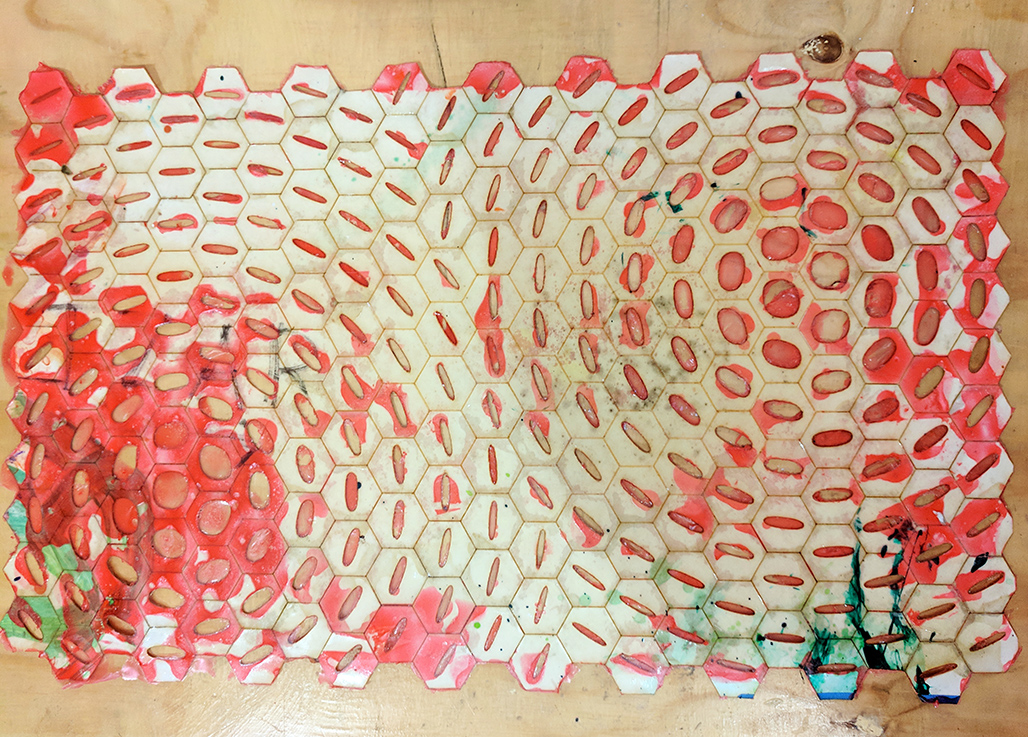Fixing broken bioplastic
When laser cutting the second sheet of the bioplastic+paper composite, a mistake in the power settings of the laser cutter for the engraving of the hexagons caused them to be cut instead of engraved. This phenomenon hindered the integrity of the sheet, as most of the cuts went through.
ITERATION 1


Instead of trashing the material and starting over, I decided to try and fix it, by applying a variety of methods:
Vynil glue
Resistol
Super glue (kola loka)
Recycled bioplastic
I applied the different types of adhesives on selected areas of the broken bioplastic sheet, labeled them and waited 24 hours to see the results.
*The recycled bioplastic came from reheating the scraps of the bioplastic+paper sheets with a bit of additional water, and applying the paste inside the cuts. The process was quite laborious and would have been quicker by using a brush rather than a stick.
After 24 hours, it was clear that the method that had worked was the recycled bioplastic. All the other glues failed at binding with the material.
ITERATION 2
After evaluating that the recycled bioplastic worked well when reheated and applied, I decided to do an extreme zero-waste intervention by only using the bioplastic recycled from the sheets, and see if it worked.
The result, after 72 hours curing, was that the bioplastic was fixed in some parts, but in others it needed more material to close more completely.
ITERATION 3

Together with Melina, who was doing her own sheet of bioplastic, I made some more bioplastic, this time adding red coloring to it, and then spread it more abundantly with a brush on the whole sheet.
After 4 days curing, I removed the sheet from the acrylic support and add a result, 85% of the sheet was fixed. The remaining was weaker and probe to break if force was applied to it. The cool effect was the addition of the red blotches, giving it a bit of a creepy bloodlike look.
I then used a hot gun to shape the bioplastic skin on the mannequin, and realized that the hexagons could break up again with heat, but also re-glue themselves up. Overall, the bioplastic can mold after curing, but not to the fullest extent.
CONCLUSIONS
1. Next time I'll be more careful with my engraving settings 😅
2. When fixing a bioplastic, more bioplastic is better than less plus it's time consuming with worse material performance, so better to assess if it's best to proceed or to just make a new sheet altogether